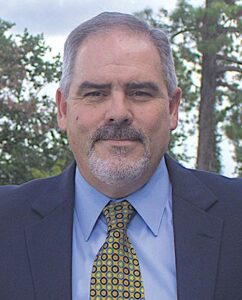 Grid reliability is becoming a more and more of a concern for utility operators and the government agency responsible for maintaining grid reliability, the Federal Energy Regulatory Commission (FERC), but not the U.S. Environmental Protection Agency (EPA), which is advancing its Clean Power Plan 2.0 (CPP 2.0). Despite the current fragile state of the grid during peak demand periods, the EPA is advancing a bold net-zero-by-2035 initiative that has been crafted without realistic input from the people that operate the grid.
Grid reliability is becoming a more and more of a concern for utility operators and the government agency responsible for maintaining grid reliability, the Federal Energy Regulatory Commission (FERC), but not the U.S. Environmental Protection Agency (EPA), which is advancing its Clean Power Plan 2.0 (CPP 2.0). Despite the current fragile state of the grid during peak demand periods, the EPA is advancing a bold net-zero-by-2035 initiative that has been crafted without realistic input from the people that operate the grid.
Grid reliability and the CPP 2.0 were hot topics at the annal FERC Reliability Technical Conference. “As proposed, the [CPP 2.0] would result in the disorderly retirement and elimination of baseload generation at alarming rates that will leave the electricity grid with a significant deficit of dispatchable generation as replacement generation will not be available,” said Campbell, president and CEO of East Kentucky Power Cooperative, who testified at the conference.
The EPA’s proposed solutions include carbon capture and sequestration (CCS) and hydrogen as a fuel source in additional to a massive buildout in renewable generation. CCS and hydrogen are two developing areas for power generation that may not be ready by 2035. More importantly, if the technologies were commercially scalable today, the timeline to permit the infrastructure development and the sites are well beyond the EPA’s current capabilities.
The FERC doesn’t have a lot of faith in CPP 2.0 as it currently stands. In a letter responding to questions from Sens. John Barrasso (R-WY) and Shelly Moore Capito (R-WV), FERC Commissioner James P. Danly wrote: “The portion of the technical conference dedicated to engaging with the EPA on the Proposed Rule was limited to 60 minutes. This cursory treatment stands in stark contrast to the four technical conferences that the [FERC] convened in 2014 and 2015 to engage the EPA on the implications of the original Clean Power Plan Proposal.”
Perhaps the reason for the limited discussion of the proposed rule arises from EPA’s own uncertainty as to what reliability impacts the rule will have, Danly surmised. “The Proposed Rule professes that ‘EPA has carefully considered the importance of maintaining resource adequacy and grid reliability in developing its proposal’ and states that EPA ‘evaluated the reliability implications,’” Danly said. “It did not.” He also pointed out that the word reliability was removed from the Resource Adequacy Analysis Technical Support Document.
Danly said he is encouraging the EPA to reopen its comment period so the agency can develop an adequate record on the reliability impacts of its proposed rule and allow public comment on the analysis.
It’s clear that the EPA is setting unattainable goals in a questionable pursuit of net zero. Hopefully, common sense will prevail, and the EPA will withdraw it rather than face protracted litigation to reach the same conclusion.




